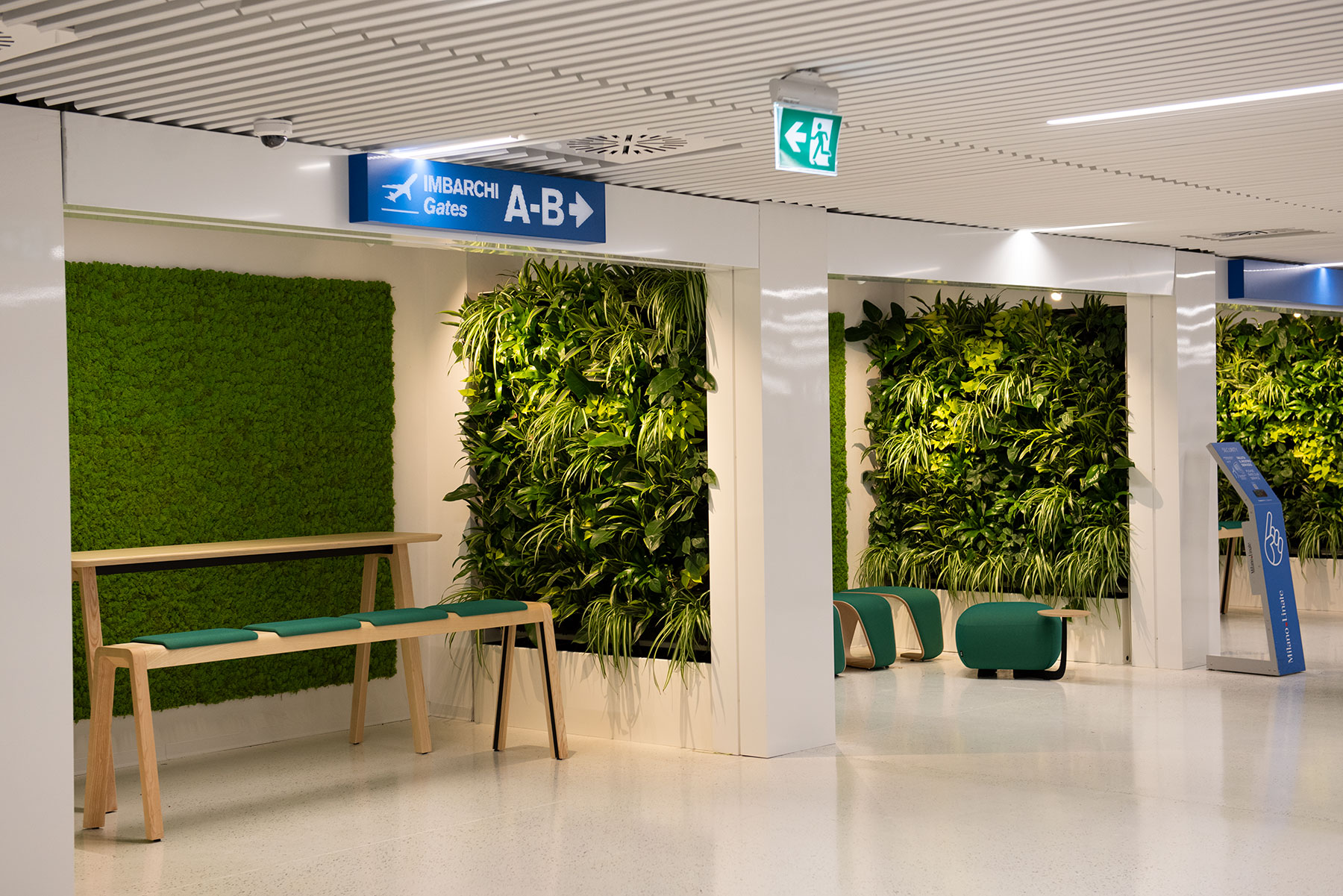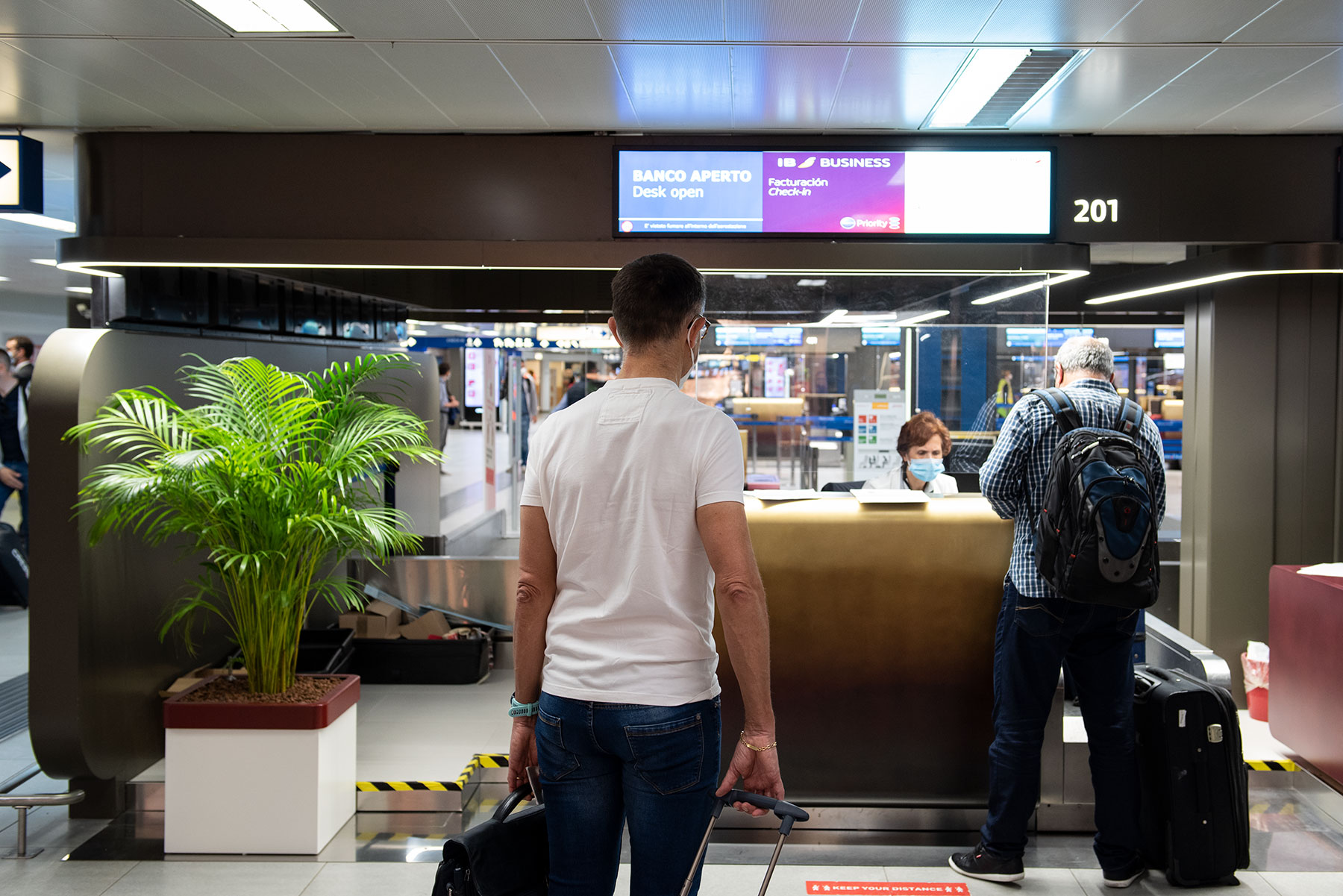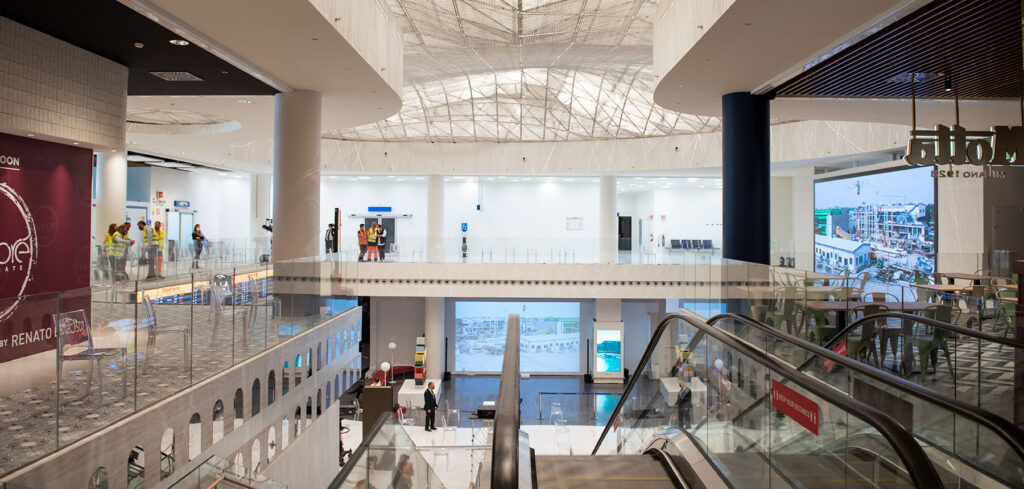Images of Italy’s redeveloped Milano Linate Airport have been presented to the public following major redevelopment work that began in 2019 and has, according to the airport, been completed on schedule.
After a façade makeover in 2018, the terminal’s architectural and ambience restyling project began. Work on the Linate terminal involved an architectural and functional redesign of the check-in area, security filters and duty-free area. The old part of the single-story terminal was demolished to create a new three-story building with a total area of 10,000m2 (approximately 3,000m2 per floor). The terminal has also been expanded with a new area developed across three levels, including gates, a new shopping arcade and a food court.
The check-in area has been redesigned with a double-height ceiling and plants overlooking the first floor to give the environment a ‘green’ touch. The existing suspended ceilings have been replaced with wood-effect baffle slats alternating with plasterboard sails that enhance the perception of the surrounding space. Additionally, an integrated lighting system emphasizes the curved lines of the sails and the LED profiles alternating with the baffles. Meanwhile, the check-in desks have been redesigned using a design with soft edges, covered in brass. Ad hoc lighting has been arranged above the desks, with an overlying band in line with the design of the desks.

The area dedicated to security filters has also been revamped and was opened in October 2020. The architectural elements, colors and materials used for the walls, floors and ceilings were chosen to reduce the stress that security checks can cause, and new EDS-CB (explosive detection systems for cabin baggage) machines using CT technology have been installed. The highly efficient system allows for screening without the need to separate electronics and liquids from carry-on baggage, further enhancing the travel experience.
According to the airport, the terminal area has obtained BREEAM In-Use excellent certification in the areas of energy saving, user health and well-being, attention to the use of resources (water, building materials, land consumption), waste management and environmental pollution.


